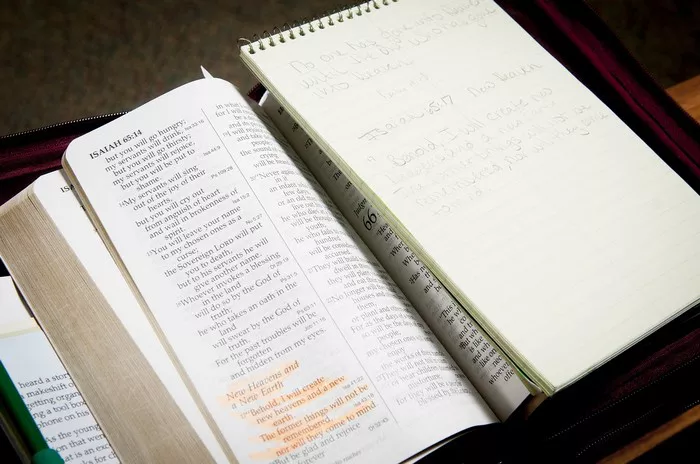In today’s fast-paced world, finding time for spiritual nourishment can be a challenge. Yet, many individuals aspire to deepen their understanding of their faith and engage more deeply with religious texts, such as the Bible. The Bible, a sacred text revered by billions worldwide, is a vast and profound source of wisdom, inspiration, and guidance. However, its sheer size and complexity can be daunting for those looking to read it in its entirety.
Fortunately, with dedication, discipline, and a well-structured plan, it is entirely feasible to read the entire Bible within a year. In this article, we will outline a detailed plan to help you accomplish this monumental task, breaking down the Bible into manageable portions and providing practical tips to stay on track.
Setting the Stage: Preparing for the Journey
Before embarking on the journey of reading the entire Bible in a year, it’s essential to approach the endeavor with the right mindset and preparation.
1. Commitment: Make a firm commitment to prioritize regular Bible reading in your daily schedule. Treat it as a non-negotiable appointment with yourself and with the Divine.
2. Selecting a Translation: Choose a translation of the Bible that is clear, accurate, and easy for you to understand. Popular options include the New International Version (NIV), the English Standard Version (ESV), and the New Living Translation (NLT).
3. Acquiring Resources: Consider investing in supplementary resources such as a study Bible, commentary, or reading plan app to provide additional insights and support along the way.
The Blueprint: A Structured Plan for Success
Now, let’s delve into the nitty-gritty details of how to read the entire Bible in a year. This plan is designed to provide a balanced approach, spreading out the readings evenly across the various sections of the Bible while allowing for flexibility and reflection.
Old Testament
The Old Testament comprises the first two-thirds of the Bible, encompassing the history, poetry, and prophecy of the ancient Hebrew people.
1. Genesis to Deuteronomy: Begin by reading the foundational books of Genesis through Deuteronomy, which lay the groundwork for the history of Israel and God‘s covenant with His people. Aim to read 2-3 chapters per day.
2. Historical Books: Proceed to the historical books, including Joshua, Judges, Ruth, 1 and 2 Samuel, 1 and 2 Kings, 1 and 2 Chronicles, Ezra, Nehemiah, and Esther. Read 1-2 chapters per day, adjusting as needed for longer chapters.
3. Poetry and Wisdom Literature: Dive into the poetic and wisdom books such as Job, Psalms, Proverbs, Ecclesiastes, and Song of Solomon. These can be read in smaller increments, such as one chapter per day, allowing time for reflection on the profound truths contained within.
4. Major and Minor Prophets: Conclude the Old Testament portion with the prophetic books, both major (Isaiah, Jeremiah, Ezekiel, Daniel) and minor (Hosea to Malachi). Allocate 1-2 chapters per day, adjusting for varying lengths.
New Testament
The New Testament presents the life, teachings, death, and resurrection of Jesus Christ, along with the early Christian church’s growth and teachings.
1. Gospels: Start with the Gospels of Matthew, Mark, Luke, and John, which offer four distinct perspectives on the life and ministry of Jesus. Read one chapter per day, allowing for deeper meditation on the teachings of Christ.
2. Acts: Transition to the book of Acts, which chronicles the early spread of Christianity and the actions of the apostles. Read 1-2 chapters per day to cover this pivotal historical account.
3. Epistles (Letters): Proceed to the epistles, or letters, written by apostles such as Paul, Peter, James, and John to various early Christian communities. These can be read in larger chunks, such as one letter per day or a few chapters at a time, depending on length.
4. Revelation: Conclude the New Testament portion with the book of Revelation, which offers apocalyptic visions and prophetic insights into the end times. Read one chapter per day, allowing time for careful consideration of its symbolic imagery.
Tips for Success
While following this plan, keep the following tips in mind to enhance your reading experience and ensure successful completion:
1. Consistency is Key: Make Bible reading a daily habit, preferably at the same time and in the same place to establish a routine.
2. Take Notes and Reflect: Keep a journal to jot down insights, questions, and reflections as you read. Engage with the text actively rather than passively consuming it.
3. Use Supplementary Resources: Refer to study notes, commentaries, or online resources to gain deeper understanding and context for challenging passages.
4. Stay Flexible: Life happens, and there may be days when you’re unable to stick to the prescribed readings. Don’t be discouraged—simply pick up where you left off and keep moving forward.
5. Seek Accountability and Support: Consider joining a Bible study group or enlisting an accountability partner to share your progress, insights, and struggles along the way.
Conclusion
Reading the entire Bible in a year is a formidable yet immensely rewarding undertaking. By following a structured plan, committing to regular reading, and incorporating reflection and supplementary resources, you can deepen your understanding of Scripture and draw closer to the divine wisdom it contains. May this journey enrich your spiritual life and illuminate your path with truth, love, and grace.


